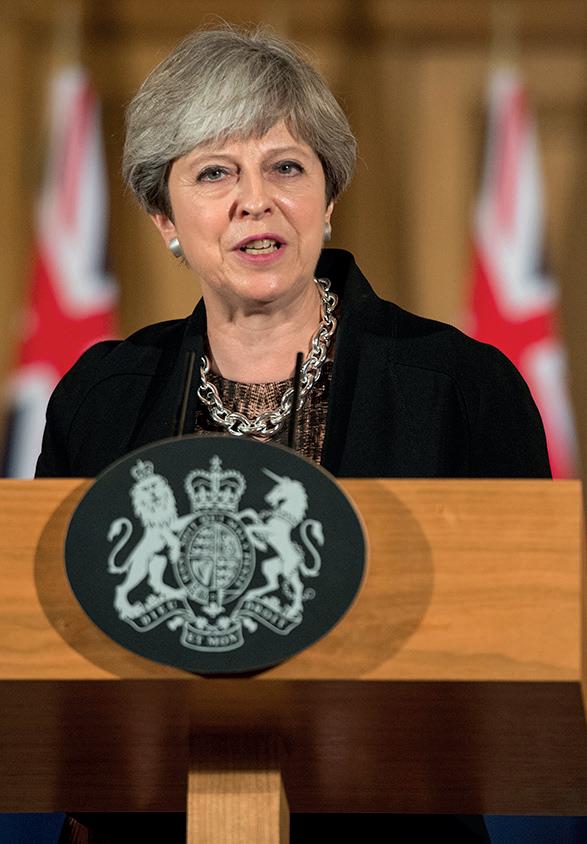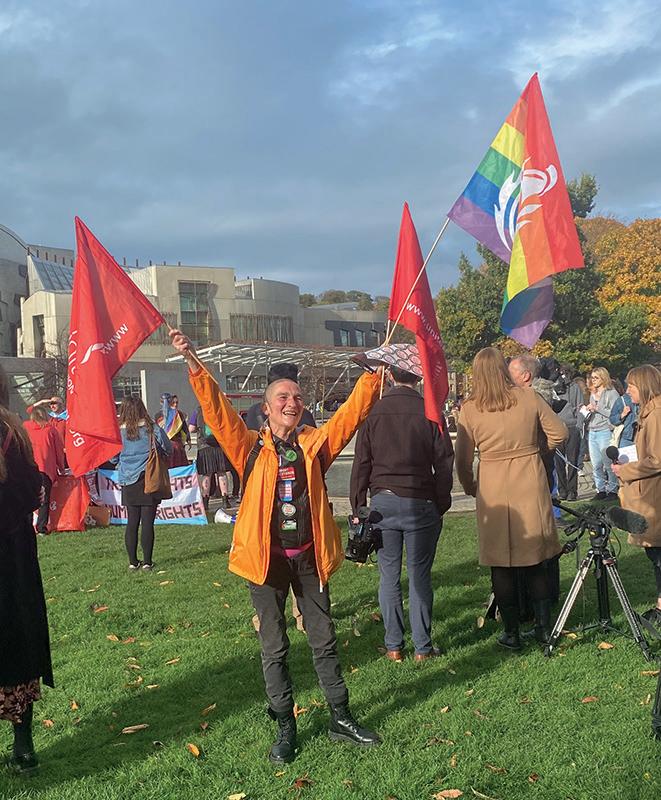
2 minute read
GRA Timeline 2002 2004 2016
from Gey Scotia S/S 2023


Advertisement
Christine Goodwin, a British trans woman and former bus driver, in 1990 underwent sex reassignment surgery. Due to the fact that trans people were unable to change the sex on their birth certificate, she wasn’t allowed to receive her state pension at the same age as other women. She would eventually challenge the UK Government in the European Court of Human Rights over this issue. After this, the ECHR found there were multiple violation in UK law and ruled in favour of Goodwin. This led to the UK Government having to introduce legislation to comply.

Over ten years later, with the Tories in power and Theresa May at the helm, Westminster’s Women and Equalities Committee publish a root and branch review of the GRA. The outcome of this review leads to plans being made to reform the legislation.
With Labour in Government the UK passed the Gender Recognition Act. The passing of this act meant that for the first time, trans people were able to apply for a gender recognition certificate and be able to change their legal gender on all legal documents. The act set out a series of criteria: needing a diagnosis of gender dysphoria from a doctor, having lived in their acquired gender for more than three years, on top of many others.

SNP return to Government with a Scottish Greens coalition. As part of the deal, the two parties agreed to introduce a Gender Recognition Reform Bill before the end of May 2022.

In June the European Commission released a report that classified the legislation for gender recognition of 28 European countries into five categories based on the barriers to access. The UK’s GRA was placed in the second last category, labelled as having “intrusive medical requirements.” However, with Boris Johnson now Prime Minister, the UK Government scrapped plans of reforming the Gender Recognition Act. Scotland’s GRA Reform was delayed due to the pandemic, with plans to continue after the 2021 Scottish Parliament elections.

2nd March saw the introduction of the bill to the Scottish Parliament, by Shona Robison, the Cabinet Secretary for Social Justice, Housing and Local Government. Three stages of consultation happened, and the bill was finally passed on 19th December. The bill would lower the age of being able to access a GRC, it would de-medicalise the process, and reduce the waiting times of living in their acquired gender to six months. The bill passed with cross-party support.
In Scotland, the Scottish Government published its review of the GRA with intentions to reform it. They state that the current GRA is “out of date” and “intrusive and onerous”. In Westminster, Justine Greening, the Minister for Equalities at the time, considered reforms to the same degree as the Scottish Government, wanting to de-medicalise the process with self-identification.

In January, Scotland Secretary Alister Jack announced that he was going to veto Scotland’s GRR bill using Section 35 of the Scotland Act 1998, which would prevent the bill from proceeding to royal assent.











